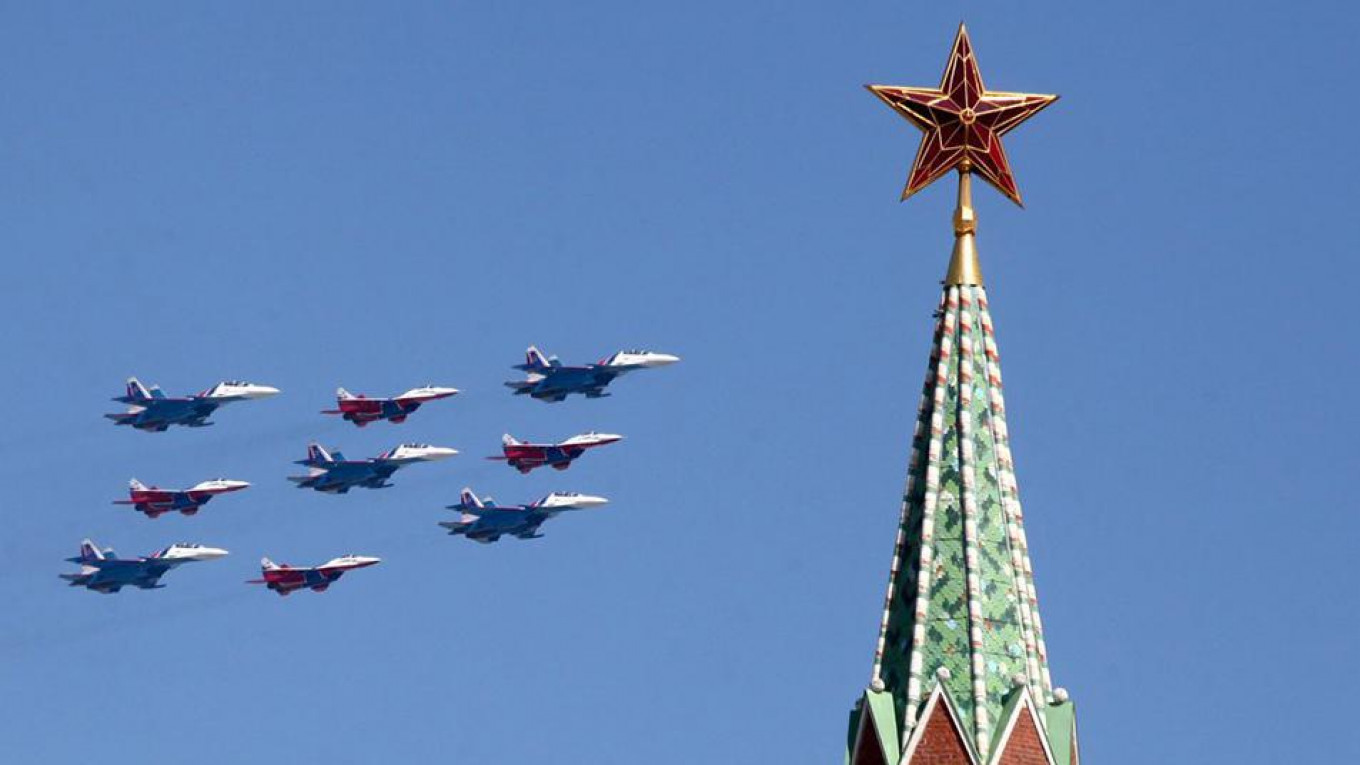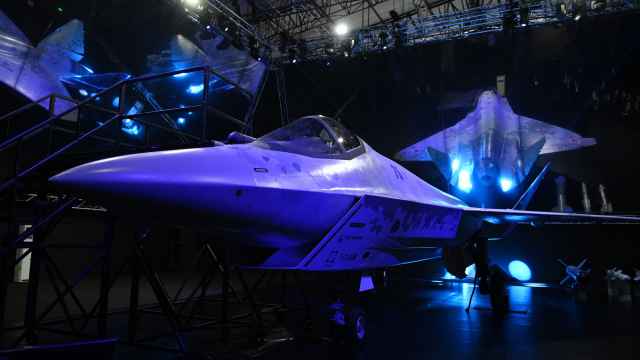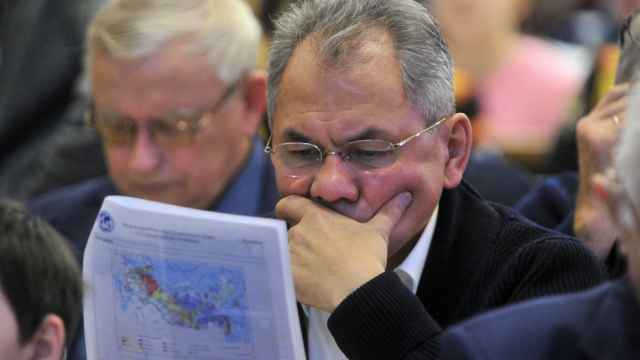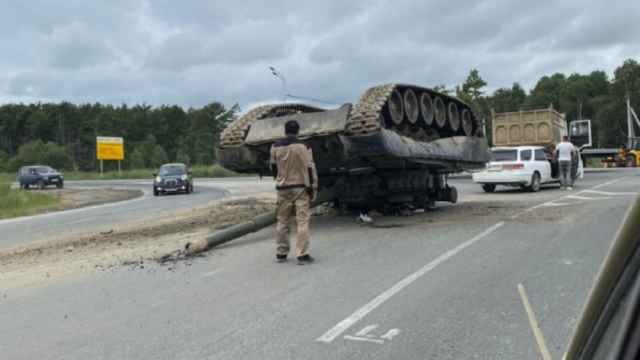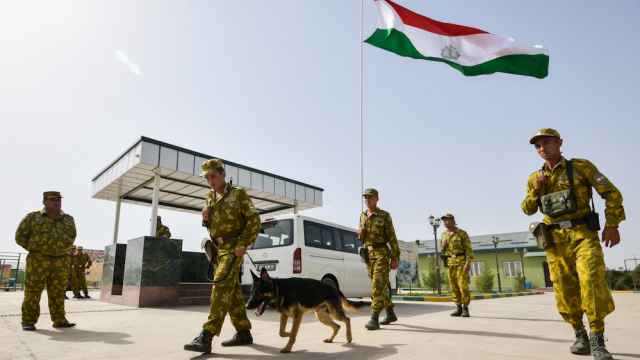Russia’s annual May 9 parade is not just a commemoration of the nation’s victory over Germany in World War II — a long established pillar of the national idea under the current leadership. It is also equal part military expo and celebration of the armed forces.
Victory Day is when Russia feels strong. It is intended to be a reminder of the nation’s historic resilience and willpower. While much of the country is indeed undergoing a test of resilience, the armed forces, in particular, have much to be thankful for, as they continue to benefit from public support, a substantial percentage of the government budget and a new state armament program for 2018-2027.
Despite modest reductions to the defense budget since 2015, the Russian military has suffered the least in state cuts relative to other government services.
Erroneous announcements from the Stockholm International Peace Research Institute (SIPRI) aside, Russian defense spending has assuredly not declined by 20 percent in 2017, but on the contrary, is realizing only modest cuts. Defense spending was planned to decline on average by 6 percent in 2017-2019, but actual budget cuts were at less than 5 percent in 2017, and there is little indication of steeper reductions in 2018.
Oil prices are not only well above the budget’s $40 per barrel figures, but in recent months have surged above $70. While the defense budget has plenty of fat to trim, Russia’s stabilized economy and rising energy prices bode positively for military expenditures.
Public sentiments also reflect considerable respect for the military, a marked change from the past, together with a surge of appreciation for Russia’s more prominent role in international politics. The former is increasingly underwriting the latter.
It is the use of military power and coercive diplomacy backed by the threat of force that has brought Russia the perception at home and abroad that it is back as a player on the international arena. As the confrontation with the West unfolds, Moscow is fundamentally married to defense spending to support ongoing conflicts in Syria and Ukraine, a revived defense sector that needs to keep producing something and a military that has grown in domestic popularity.
Attitudes are likely to improve thanks to a recently announced and long-overdue pay raise of 4 percent in the armed forces to keep track with inflation. A state armament program with 19 trillion ($305 billion) for the armed forces, 1 trillion in infrastructure investment and 3 trillion for other security services is not only substantial but economically sustainable. Even with modest, i.e. stagnating growth of 1.5 percent, the Russian economy should be able to support this level of defense spending.
In short, Russia’s military may not be flush with money, but of all the sectors of society pressed by Russia’s economic situation, it has likely fared the best. Further deteriorating relations with the West are likely to result in mutually assured spending, a state of affairs whereby security services and the military establishment on both sides can point to each other as the basis for their perpetual demands on the state’s treasury.
On Victory Day, it has also become tradition to roll out new equipment — often still in prototype or testing phases — as way of demonstrating Russia’s continued technological advancements. In previous years Russia debuted a new line of ground vehicles, including the T-14/T-15 Armata platform, Kurganets, Boomerang, and other vehicles (all of which still have years to await before entering serial production).
In 2018, the emphasis was on advances in autonomous weapon systems and unmanned vehicles. Russian armed forces, long behind in fielding unmanned systems, have benefited from an explosion of procurement in this sector, with official figures listing 1,800 systems deployed across the force.
Many of these are small, short-range and relatively simple reconnaissance systems, together with some de-mining unmanned ground vehicles. Armed systems like Uran-9 were allegedly tested in Syria according to Russian defense officials, but there has not been any proof of such claims.
The irony is that behind the facade, Russia remains considerably behind in developing and fielding unmanned aircraft systems (UAS) compared to the U.S., China and other less advanced militaries, perhaps to include Iran. There is still no armed UAS capable of conducting recon-strike missions, and most of Russia’s longer endurance UAS are Israeli designs.
In truth, while the introduction of drones has done tremendous things for the Russian armed forces’ ability to see on the battlefield, they are lagging in sophistication, the missions they can perform and the technology involved.
Other weapons demonstrated, such as the Kinzhal hypersonic aeroballistic missile on the Mig-31, are much better examples of Russian technological advancements. The country’s military-industrial complex continues to make progress in advanced weapon designs, capabilities we are likely to see fielded in the 2020s, including hypersonic weapons.
Russia continues to make progress on modernizing the capabilities of the force, even though it faces considerable economic headwinds and poor prospects for improvements looking out into the 2020s. In short, the picture is far from rosy, but there’s a tangible growth in capability behind the pomp and celebration.
The parade is always part reality and part aspiration, a demonstration of a mythologized past, an arguably militaristic present and an aspirational vision of the weapons Russian armed forces will field in the future. Russia’s armed forces remain well positioned for Vladimir Putin’s fourth term, in which there are few certainties, except that he will likely have further need of them.
Michael Kofman is a senior research scientist with the Center for Naval Analyses. The views and opinions expressed in opinion pieces do not necessarily reflect the position of The Moscow Times.
A Message from The Moscow Times:
Dear readers,
We are facing unprecedented challenges. Russia's Prosecutor General's Office has designated The Moscow Times as an "undesirable" organization, criminalizing our work and putting our staff at risk of prosecution. This follows our earlier unjust labeling as a "foreign agent."
These actions are direct attempts to silence independent journalism in Russia. The authorities claim our work "discredits the decisions of the Russian leadership." We see things differently: we strive to provide accurate, unbiased reporting on Russia.
We, the journalists of The Moscow Times, refuse to be silenced. But to continue our work, we need your help.
Your support, no matter how small, makes a world of difference. If you can, please support us monthly starting from just $2. It's quick to set up, and every contribution makes a significant impact.
By supporting The Moscow Times, you're defending open, independent journalism in the face of repression. Thank you for standing with us.
Remind me later.



